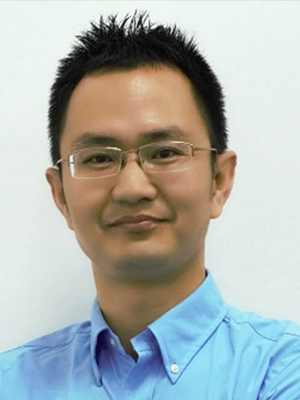
Principal Investigator
Neurobiology
zbo@szbl.ac.cn
2020 - Present Shenzhen Bay Laboratory Junior Principal Investigator
2019 - PresentPeking University Shenzhen Graduate School Principle Investigator
2017 - 2018Stanford University Basic Research Scientist
2011 - 2017Stanford University & HHMI (Postdoc) Research Associate
2005.09-2011.07Peking University PhD
2001 - 2005MinZu University of China B.S
The human brain consists of more than 100 billion neurons, which process and transmit information at specialized junctions called synapses. How are properties of synapses formed, stabilized, maintained, and modulated critical for maintaining accurate neuronal network activity and normal brain function?
Our laboratory is interested in understanding the molecular basis of the formation and function of synapses and exploring the mechanisms underlying the impairments in synaptic function that are observed in neurodevelopmental and neurodegenerative disorders. We are particularly interested in molecular mechanisms of building and maintaining synapses, with the notion that both neurons and non-neuronal cells encode the cellular logic of neural circuits.
In pursuing those questions, our laboratory will utilize an interdisciplinary approach that spans from in vitro studies to animal behavior assessments and includes patch recording in the acute slice, animal behavior, stereotaxic injection of virus for gene manipulation and functional circuit tracing, optogenetics, molecules biology, mouse genetics.
Our studies will identify molecules that are required for the formation/function of synapses and determine how mutations in their genes give rise to neurodevelopmental or neurodegenerative disorders. Our findings will thereby provide insights into basic molecular mechanisms that mediate synaptic function and contribute to understanding the role of malfunction of synapses in neurologic disorders.
Bo Zhang is a Principle investigator in the Institute of neurological and neuropsychiatric disorders at Shenzhen Bay laboratory. His lab is interested in understanding the molecular basis of the formation and function of synapses and exploring the mechanisms underlying the impairments in synaptic function that are observed in neurodevelopmental and neurodegenerative disorders. He received his PhD in Physiology from the Peking University under the mentorship of Zhuan Zhou. After a postdoc training in Stanford University School of Medicine/Howard Hughes Medicine Institute with Thomas Südhof, he joined the faculty at the Peking University Shenzhen graduate school in January 2019. In May 2020, he joined Shenzhen Bay laboratory.
His lab is supported by multiple external grants, including NSFC-General Program (2021-2024), NSFC-Excellent Young Scholars Fund (2021-2023), NSFC-FWO international grant (2022-2024), SMART-General program (2024-2026), the General Project of Guangdong Natural Science Foundation (2019).
(*, first author; # Corresponding author)
1. Qin, L*, Liu, Z.*, Guo, S., Han, Y., Wang, X., Ren, W., Chen, J., Zhen, H., Nie, C., Xing, K., Chen, T., Südhof TC#, Sun, Y.#, Zhang, B#. (2024). Astrocytic Neuroligin-3 influences gene expression and social behavior, but is dispensable for synapse number. Molecular Psychiatry.
2. Lloyd, B.A., Han, Y., Roth, R., Zhang, B., and Aoto, J#. (2023). Neurexin-3 subsynaptic densities are spatially distinct from Neurexin-1 and essential for excitatory synapse nanoscale organization in the hippocampus. Nature Communications.14, 4706.
3. Zhu, F.*, Liu, L.*, Li, J.*, Liu, B., Wang, Q., Jiao R., Xu, Y., Wang, L., Sun, S., Sun, X., Younus, M., Wang, C., Hokfel, T., Zhang, B.#, Gu, H.#, Xu, Z.#, Zhou, Z.#. (2022). Cocaine increases quantal norepinephrine secretion through NET-dependent PKC activation in locus coeruleus neurons. Cell Reports. 40(7), 16 August 2022, 111199.
4. Han, Y*, Cao, R*, Qin, L., Chen, L., Tang, A.,#, Südhof, TC#, Zhang, B#. (2022) Neuroligin-3 confines AMPA-receptors into nanoclusters, thereby controlling synaptic strength at the calyx of Held synapses. Science Advances.
5. Qin, L., Guo, S., Han, Y., Wang, X., Zhang, B#.(2020) Functional mosaic organization of neuroligins in neuronal circuits. Cellular and Molecular Life Sciences.77, 3117-3127.
6. Zhang, B.#, Gokce, O., Hale, D., Brose, N., Südhof, TC. (2018) Autism-associated Neuroligin-4 mutation selectively impairs glycinergic synaptic transmission in mouse brainstem synapses. Journal of Experimental Medicine. 215 (6): 1543-1553.
7. Zhang, B.#, Seigneur, E., Wei, P., Gokce, O., Morgan, J., Südhof, TC. (2017) Developmental plasticity shapes synaptic phenotypes of autism-associated neuroligin-3 mutations in the calyx of Held. Molecular Psychiatry. 22, 1483–1491. [F1000 recommended].
8. Zhang, B.#, Südhof, TC. (2016). Neuroligins are selectively essential for NMDA-receptor signaling in cerebellar stellate interneurons. Journal of Neuroscience.36(35):9070-9083. Highlighted in J. Neurosci. [F1000 recommended].
9. Zhang, B.*, Chen, L.*, Maxeiner, S., Lee, S., Gokce, O., Südhof, TC#. (2015) Neuroligins Sculpt Cerebellar Purkinje-Cell Circuits by Differential Control of Distinct Classes of Synapses. Neuron.87(4):781-96. (Cover Story)